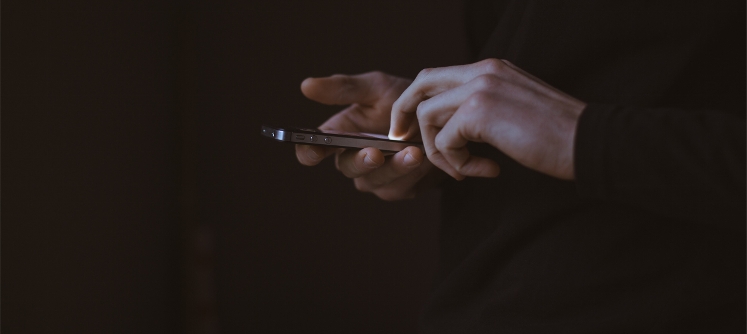Just in case you missed the powerful docu-drama starring Maisie Williams, here’s all you need to know about cyberbullying.
As children’s use of technology continues to grow, bullying is no longer simply confined to the walls of the playground and parents are under more pressure than ever to remain in the know.
There’s no doubt that the online universe can be an amazing place for kids to learn, play games and share their weekend antics with their friends.
| ” The internet offers wonderful experiences for growing and inquisitive young minds.” Dr Richard Woolfson – child psychologist and knowthenet.org.uk spokesman |
However, without a hawk-eyed parent to watch over them, kids can be at risk of becoming victim to the latest method of bullying, termed ‘cyberbullying’.
Today, most kids have mobile phones, tablets and laptops, and, according to a recent study, more than half of all kids will be ignoring the suggested age-limit and regularly using social networking sites by the age of ten. So it’s up to parents, just like in reality, to keep the peace in cyberspace.
A recent study conducted by Kaspersky Lab found that kids are more vulnerable to cyberbullying because a worrying amount of parents aren’t aware of the dangers or discussing the issue with their kids.
The lab, who held interviews with kids (aged 5-11) and their parents, revealed that parents aren’t aware of just how much their young kids are already using the internet and felt it was a discussion for when they were older.
What is cyberbullying?
Cyberbullying is the harassment, torment, blackmail or intimidation of a person via texting or online social media. Cases of cyberbullying amongst kids involve:
– Victims having vicious rumours spread about them on websites such as Twitter or Facebook
– Unflattering or intimate photographs of them shared publicly
– Having personal information shared about them online
How can you prevent cyberbullying?
Cyberbullying can take place on any platform of social media; this means that apps such as Snapchat, WhatsApp, and Instagram have also been used by bullies to victimise and humiliate kids. It’s vital that parents and kids don’t under-estimate online bullying; the modern phenomena has been linked to tragic suicides both in the United States and over here in the UK.
| “A child’s privacy ends where their safety begins. Monitor and become familiar with the sites your kids are regularly visiting. Make sure you’re in-the-know about what your kids actually do and who they speak to online.” |
It’s important your kids know that as a grown up and parent, you have the responsibility to check their online activities and conversations if you think their safety is at risk. It’s also helpful to install parental control software – which is now available from most internet providers.
Remember it’s not just online; cyberbullying can happen in text messages too, so it’s crucial to make sure your kids are texting the right people and not using their phone inappropriately.
It may seem extreme for some parents, but asking for your kid’s passwords could well prevent them from serious trouble in the future. Remember to tell them you’ll only use these in case of an emergency.
If you use social media yourself, try to be a part of their online experience; ‘follow’ or ‘friend’ them, just so they know you’re aware of what’s happening online.
Get a dialogue going about cyberbullying from as early as possible – make it a somewhat regular topic at the dinner table or in the car.
Finally, make sure you encourage your kids to tell you if they or anyone they know is being cyberbullied. Reinforce that they aren’t in trouble if cyberbullying comes their way, and you only want to know for their own safety and so the bully can be identified and dealt with appropriately.
With research showing parents assume cyberbullying doesn’t pose a risk until children reach secondary school, kids are being exposed to dangers daily through unsupervised internet use. With a few simple steps and lots of communication, parents can soon ensure their little ones are safer when visiting the online world.




























